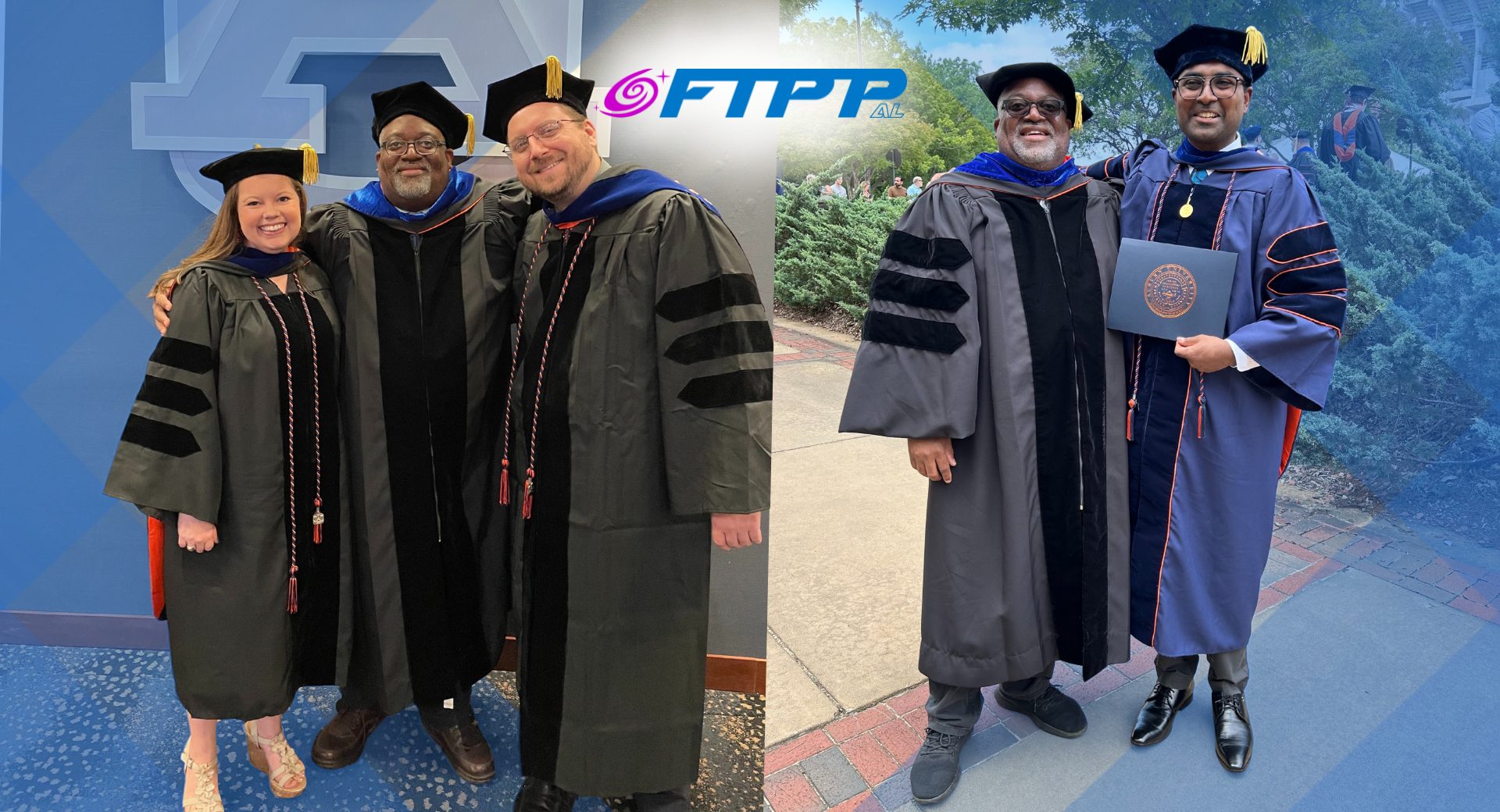National Science Foundation grants fuel tenure-track careers for three Auburn doctoral graduates

Three Auburn University (AU) doctoral physics graduates whose research was supported by Alabama’s Future Technologies & enabling Plasma Processes (FTPP) grant from the National Science Foundation (NSF) Established Program to Stimulate Competitive Research (EPSCoR) will be starting tenure-track university positions in fall 2025.
Dr. Lori McCabe, who achieved her doctorate in 2022, will be an assistant professor at Colgate University in Hamilton, NY. Dr. Michael “Misha” McKinlay, also a 2022 doctoral graduate, will be an assistant professor at Loras College in Dubuque, Iowa. Dr. Bhavesh Ramkorun, who earned a 2025 doctorate, will be an assistant professor at Sewanee: The University of the South in Sewanee, Tenn.
Plasma is a ubiquitous form of energized gas used in myriad high-technology manufacturing processes, including semiconductors and advanced materials. Prior to FTPP, the trio’s work was supported by Connecting the Plasma Universe to Plasma Technology in Alabama (CPU2AL), a predecessor $20 million NSF EPSCoR grant.
“The FTPP project – which builds on the legacy of the CPU2AL project – shows the value of a long-term, steady investment in building scientific talent,” said Dr. Edward Thomas Jr., AU dean of the College of Sciences and Mathematics.
“These three individuals are able to start these tenure-track positions because of the training from the EPSCoR project,” says Dr. Thomas, who advised Dr. McCabe and Dr. McKinlay and co-advised Dr. Ramkorun with Dr. Ryan Comes, an AU associate professor who is now at the University of Delaware.
“This includes rigorous scientific training and knowledge, development of communications skills through participating in presentations and public engagement opportunities, and workforce development skills gained from interacting with a variety of researchers across the statewide project. And, they all plan to continue working on problems related to plasma science and engineering!”
supplying expertise
Led by The University of Alabama in Huntsville (UAH), FTPP is a coalition of nine Alabama universities and a research corporation. One of FTPP’s long-term goals is to launch Alabama as the focal point of a Southeastern regional plasma powerhouse. Supplying the region and the nation with plasma science and engineering expertise is a key to that effort.
“All three of them will be working at institutions that are focused on undergraduate education but also strongly committed to having undergraduates involved in research,” Dr. Thomas says. “Additionally, I think it is fantastic that these three will be at institutions that have not previously had activities in plasma science. In this way, the plasma community and FTPP will be able to extend our reach.”
Dr. McCabe, a Central Education, Recruitment and Impact Fund Graduate Research Assistant during the CPU2AL project and the first year of the FTPP project, worked on the thermodynamic properties of dusty plasmas by analyzing experimental data from the Plasmakristall-4 experiment on the International Space Station and extensive simulations. Dr. McCabe’s work showed how changes in the confining electric field in microgravity lead to dust particle heating in microgravity that was not observed in ground-based experiments. She’s spent three years as a postdoctoral researcher at Mount Holyoke College in Massachusetts.
Dr. McKinlay was supported by the CPU2AL project and the first year of the FTPP project as he worked on addressing how the charge of the dust particles in a plasma can be controlled experimentally without altering the properties of the background plasma. His work developed a technique to use pulses of ultraviolet light to reliably control the charge on the dust particles. Since graduating, Dr. McKinlay has been a teaching assistant professor at Ball State University in Indiana and has continued work on modeling his dust charging project.
Dr. Ramkorun has been primarily supported by the FTPP project during his time as a graduate student working to understand the growth, morphology and physical properties of nanoparticles that are grown in chemically reactive plasmas in a hybrid project involving both plasma physics and material science. He performed one of the first studies of plasma fabricated, titanium-based nanoparticles from a gas precursor, titanium isopropoxide, and investigated carbonaceous nanoparticles. In the presence of weak magnetic fields, Dr. Ramkorun’s work showed the cyclical growth of these particles can be modified, possibly leading to new approaches for nanoparticle fabrication.
“What I am most pleased about is that after their training as part of our EPSCoR project, all of them are planning to pursue some aspect of plasma science and engineering research as part of their new academic positions,” says Dr. Thomas. “I am immensely proud to have, in some small way, contributed to their development as faculty and researchers.”

